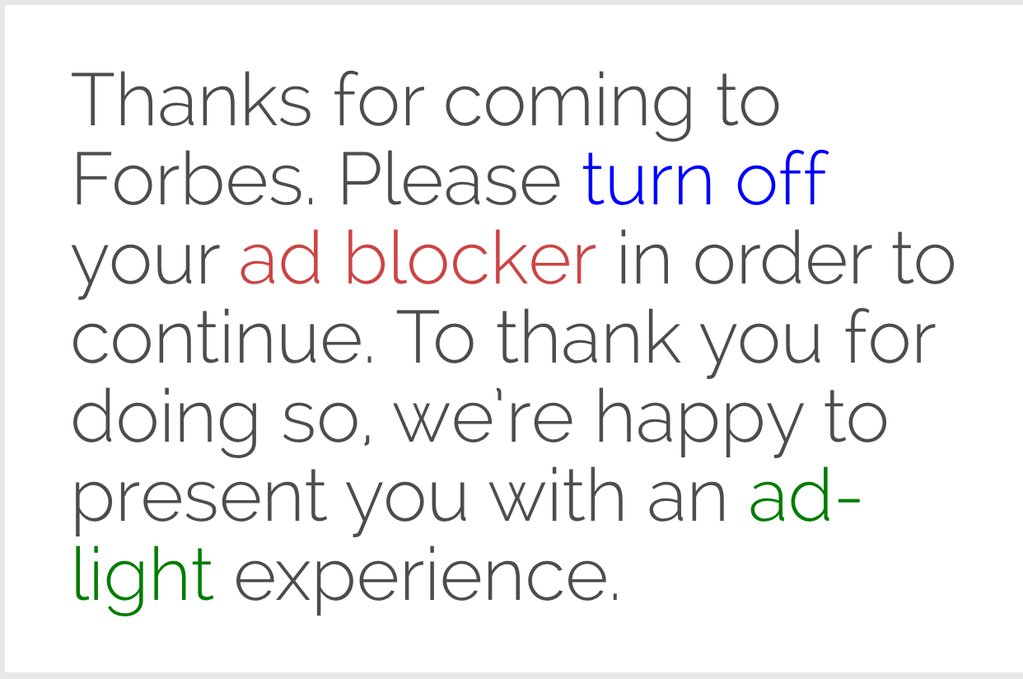
It’s apparently become a little easier to access Forbes content if you have an adblocker on.
 Previously — as recently as last week — Forbes was requiring users to turn off their adblockers or log into Forbes with a Google or Facebook account, which meant turning over personal data like email addresses and contacts.
Previously — as recently as last week — Forbes was requiring users to turn off their adblockers or log into Forbes with a Google or Facebook account, which meant turning over personal data like email addresses and contacts.
In the past couple of days, however, it appears that the site may have begun experimenting with loosening its policy.
Accidentally clicked on a Forbes link. Looks like they’re retreating in the war on ad blockers and let me in despite my ad blocker…
— Charles Fitzgerald (@charlesfitz) May 26, 2016
Did @Forbes just fix their ad blocker detector? No longer falsely detecting @firefox w. #trackingProtection as an ad blocker for me this AM.
— Don Marti (@dmarti) May 30, 2016
Something new when I followed a link to Forbes today. It "thanked me" for turning off my ad blocker. I've done nothing different.
— Mike Masnick (@mmasnick) May 31, 2016
Forbes was still preventing me from visiting the site with an adblocker on Tuesday, but several of my colleagues accessed it with adblockers on. Forbes did not respond to multiple requests for comment on Tuesday, so we can’t be sure whether or not it’s a policy shift or a backend snafu.@charlesarthur @charlesfitz I have my adblocker on. Forbes presented a landing page thanking me for turning my #adblocker off then let me in
— Privacy Matters (@PrivacyMatters) May 31, 2016
In recent months, sites like The New York Times and The Wall Street Journal have taken cues from Forbes and Wired and are getting tougher on users with adblockers enabled. Both the Times and the Journal are greeting some adblocker users with messages asking them to whitelist the sites or subscribe; even some people who already pay for subscriptions are seeing the adblocking messages. The Guardian has also said that it will consider “stricter” measures against adblocker users (for now, it just gently notes at the bottom of a page that it has detected an adblocker).
Not surprisingly, all of these policies have annoyed certain users, but Forbes’ appeared to inspire particular aggravation and mocking, perhaps in part because Forbes is not viewed as an essential news source (this tweet is fairly representative). It’s not surprising that publishers feel a need to try to do something about adblockers; their use is growing, though it is by no means mainstream in the United States yet. ComScore recently reported that 10 percent of U.S. desktop users have adblockers turned on, while PageFair reports that only a tiny share of North American smartphone users are blocking mobile ads. However, if Forbes has seen a steep enough decline in traffic, it might have decided that loosening its policy is worth it.